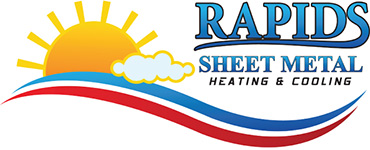
A furnace is often a background player in your home, helping keep you warm across the cold winter months. It frequently won't be noticed until something breaks down.
One root cause may be that your furnace has a cracked heat exchanger. It’s a potentially dangerous issue, so it’s critical to learn the evidence of a cracked heat exchanger and what to do if you believe that may be the problem.
What Is a Heat Exchanger in a Furnace?
A heat exchanger helps move heat from the combustion chamber of your furnace to the air that circulates through the system. It usually handles this with coils or tubes that heat up the air while functioning as a barrier to keep the gasses created in the combustion chamber, called flue gasses, from escaping out into your home.
Is a Cracked Heat Exchanger Dangerous?
Given its central role, it isn't surprising that a damaged heat exchanger can be hazardous. Cracks in the heat exchanger can allow dangerous gasses – including carbon monoxide, which can be lethal – to circulate through your home.
For that reason, do NOT use your furnace if you suspect there's a crack in the heat exchanger, as this could make the entire family ill. Call an HVAC professional as soon as possible if you are worried your heater has a cracked heat exchanger that needs repair.
Four Signs of a Cracked Heat Exchanger:
- Furnace switches off: Cracks in the heat exchanger may cause your furnace to turn off.
- Strange Smells: If the air coming out of your furnace has a powerful chemical odor, it might be evidence gas is seeping through cracks in your heat exchanger. These byproducts, which can smell like formaldehyde, are a significant warning sign.
- Carbon monoxide alarm is triggered or you feel health problems: If a cracked heat exchanger is emitting carbon monoxide inside your home, your carbon monoxide alarm could go off or household members may experience signs of carbon monoxide poisoning. Symptoms include headaches, dizziness, weakness, nausea, vomiting or feeling sleepy. If the alarm goes off or you feel unusually tired, get out of the home immediately and then call for help.
- Soot: If you notice black sooty collecting around the exterior of your furnace, it’s an indication something could be seriously wrong.
What You Can Do if Your Furnace Heat Exchanger is Cracked
If you worry your furnace has a cracked heat exchanger, hire a professional experienced in furnace installation Wisconsin Rapids right away so they can take a look at your system and, if required, start a furnace heat exchanger replacement. Costs will vary depending on the situation, but estimates often hover around $1,000 to $3,000.
Estimates aside, the good news is that heat exchangers are often protected by the warranty. You’ll want to review the warranty paperwork on your furnace, since while the warranty won't always cover the entire cost of repairs, it could significantly reduce your bill.
How to Prevent a Cracked Heat Exchanger in Your Home
One of the best ways to prevent a problem in your furnace overall is through regular furnace maintenance. Furnaces provide the best possible return on investment when they work efficiently. Contacting a trained professional to check your furnace for old parts, dirty filters and other common problems can keep you from getting a big bill later on.
It’s also helpful to review your furnace filters every few months – it’s recommended some filters be changed every 90 days or sooner if they are dirty or grimy. While the filters aren't connected to the heat exchanger itself, the strain of pulling air through a clogged filter makes your entire furnace work longer to accomplish its job. And the harder your furnace has to work, the more deterioration components like the heat exchanger will sustain.
